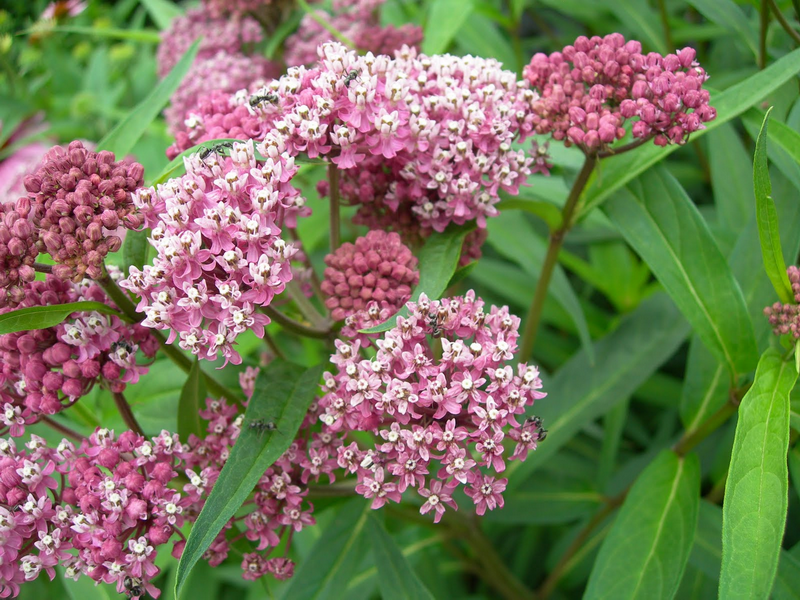Pink Milkweed
Asclepias incarnata
Click here to download a PDF of this plant information page (for printing).

Sun Exposure: Sun, Part Sun
Season of Interest: Summer, Fall
Bloom Time: June - October
Bloom Color: White to Pink
Height: 36 to 48 in.
Spread: 24 to 32 in.
Spacing: 36 in.
Water Needs: Average
Maintenance: Very little
Soil Type: Clay, Loam, High in organic matter
Soil pH: Acidic (pH < 6.0)
Soil Drainage: Well drained, ocassionally wet
Pests: None
Diseases: None
Wildlife: Bees, Buterflies

Description:
Pink milkweed is a member of the milkweed family. Its flowers are beloved by bees and butterflies. Like other milkweed species, it serves as critical host for monarch butterflies. The blooms of swamp milkweed come in shades of soft mauve to pink to reddish-violet or occasionally white. Five nectar cups form a crown on five small petals, ideal for intricate pollination. By autumn, narrow pods reveal flat brown seeds attached to the white tufts characteristic of all milkweeds. Like most milkweed species, pink milkweed is clump-forming. Sturdy, upright clumps grow on stems three to four feet tall and two to three feet wide. Leaves grow in pairs, stiff, taper-pointed, and lance-shaped. Sometimes the edges of a leaf curl inward and upward. For more information see:
plants.ces.ncsu.edu/plants/asclepias-incarnata
Care and Growing Tips:
Pink milkweed is a fantastic addition to a native garden. This low maintenance perennial is ideal for sunny borders, cottage gardens, pollinator gardens, and along the edges of ponds and streams. It is best to plant it in a permanent location because the deep taproots should be left undisturbed once the plant is established. Milkweed is slow to emerge from its dormancy so don't worry if it lags behind other perennials. As the soil warms up, it will send up new shoots. If you plant swam milkweed in the fall, give it enough time to get established before the cold weather sets in.
Full sun is best, but plants will tolerate part shade. Pink milkweed thrives in moist, medium to wet clay soils. The plant can do well in average garden soil if it does not dry out for long periods of time. Wet meadows or rain gardens offer ideal conditions. In dry spells, water enough to keep this plant moist. If given a layer of mulch, pink milkweed will likely not need watering throughout the growing season.